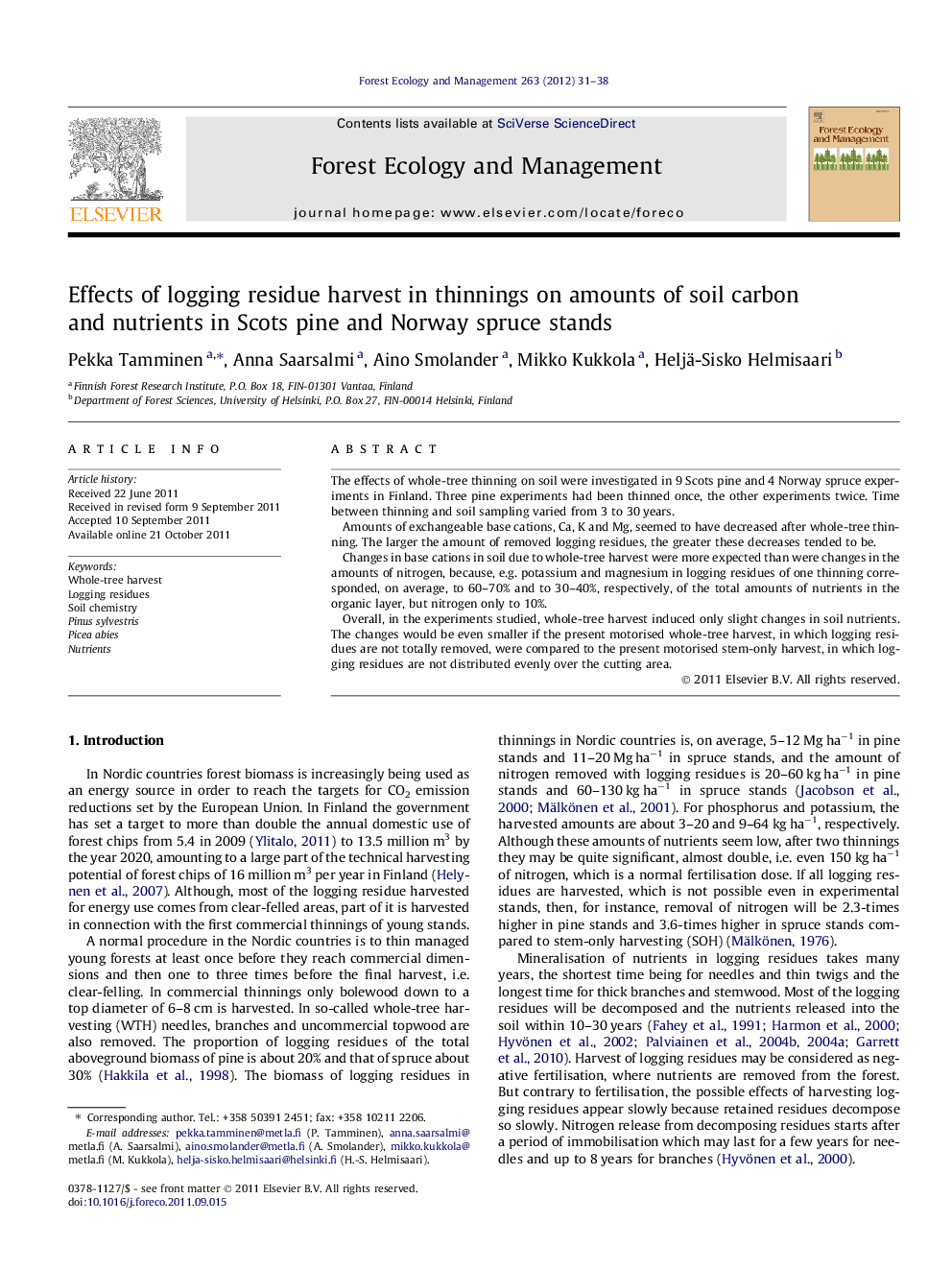| کد مقاله | کد نشریه | سال انتشار | مقاله انگلیسی | نسخه تمام متن |
|---|---|---|---|---|
| 87749 | 159265 | 2012 | 8 صفحه PDF | دانلود رایگان |

The effects of whole-tree thinning on soil were investigated in 9 Scots pine and 4 Norway spruce experiments in Finland. Three pine experiments had been thinned once, the other experiments twice. Time between thinning and soil sampling varied from 3 to 30 years.Amounts of exchangeable base cations, Ca, K and Mg, seemed to have decreased after whole-tree thinning. The larger the amount of removed logging residues, the greater these decreases tended to be.Changes in base cations in soil due to whole-tree harvest were more expected than were changes in the amounts of nitrogen, because, e.g. potassium and magnesium in logging residues of one thinning corresponded, on average, to 60–70% and to 30–40%, respectively, of the total amounts of nutrients in the organic layer, but nitrogen only to 10%.Overall, in the experiments studied, whole-tree harvest induced only slight changes in soil nutrients. The changes would be even smaller if the present motorised whole-tree harvest, in which logging residues are not totally removed, were compared to the present motorised stem-only harvest, in which logging residues are not distributed evenly over the cutting area.
► Two whole-tree thinnings caused only slight changes in the soil of pine and spruce forests.
► Whole-tree harvest tended to decrease, in particular, the amounts of exchangeable Ca, K and Mg.
► The decrease in base cations in soil correlated with the amount of logging residues remaining after harvesting.
Journal: Forest Ecology and Management - Volume 263, 1 January 2012, Pages 31–38